#Steadicam
Explore tagged Tumblr posts
Text
THE SHINING | KUBRICK'S MASTERPIECE OF SUSPENSE, SYMBOLISM, SETS & STEADICAM
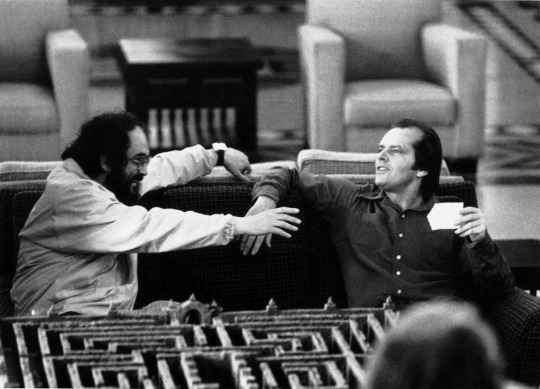
View On WordPress
#1980#cinema#conspiracy#film#Garrett Brown#horror#Jack Nicholson#Shelley Duvall#Stanley Kubrick#Steadicam#The Shining
2 notes
·
View notes
Text
youtube
The Shining and the Steadicam®: an interview with inventor Garrett Brown
0 notes
Text
Did you know
A Steadicam is a device that straps a camera to a person, where they can walk with the camera and keep the footage steady and not shaking. Check out this example from The Shining
If this interest you, we have a Steadicam for rent!

#media#public access#atherton#nonprofit#palo alto#menlo park#east palo alto#midpen#mountain view#bay area#steadicam#film#movie#the shining
1 note
·
View note
Text
youtube
The Shining and the Steadicam: an interview with inventor Garrett Brown
0 notes
Text
Dilengkapi dengan gimbal dan counterweight yang dapat diatur di kedua sisi stabilizer, membantu kamera tetap stabil dan seimbang. Sistem ini memungkinkan Anda menghasilkan rekaman yang halus dan bebas getaran, bahkan saat melakukan pergerakan cepat atau berubah arah
0 notes
Video
youtube
The Shining and the Steadicam®: an interview with inventor Garrett Brown
1 note
·
View note
Video
youtube
Nosetalgia - Pusha T ft. Kendrick Lamar
(Beat by Nottz Raw)
Steadicam by Brian Freesh
1 note
·
View note
Text

#animated gif#animated gifs#gif#gifs#old advertisements#old ads#retro#vhs#Nissan#bluebird#Nissan doesn't have steadicam#90s
109 notes
·
View notes
Text
holy production value batman !!!
5 notes
·
View notes
Text
If people enjoyed Charlie and Sneeg, you can also see them on a few of our older shows! We have our own version of Survivor, with Charlie competing in the season previous the current one airing! Sneeg was also on the latest season of Werewolf, a show adapted from a board game, before they both joined us for our wonderful Social Experiment!
I won’t spoil anything for you, have fun experiencing it yourselves!
#showfall media#showfall ask blog#generation loss#showfall media ask blog#ask blog#showfall steadicam
12 notes
·
View notes
Text
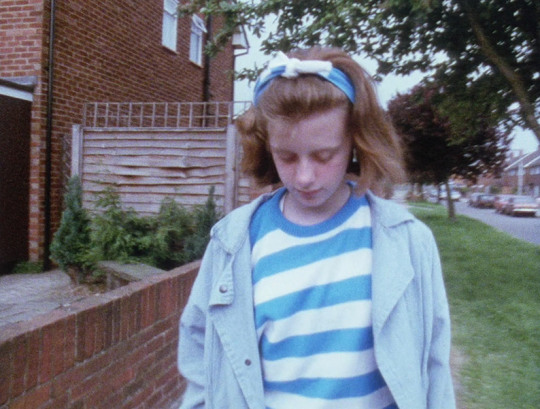

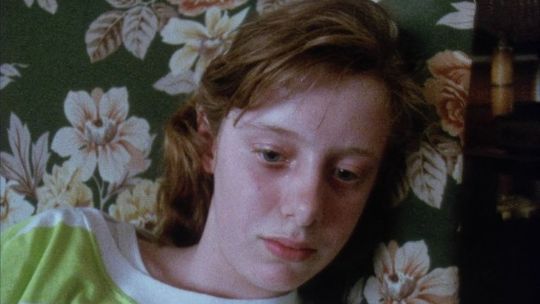

ScreenPlay: Christine (BBC, 1987)
"Jess?"
"What?"
"Your dad don't know, does he?"
#screenplay#christine#alan clarke#drugs tw#needle tw#bbc#1987#single play#classic tv#arthur ellis#vicky murdock#kelly george#joanne mapp#mark harvey#anthony smith#brenda reid#seemingly styled at various points in its existence as ScreenPlay‚ Screenplay and Screen: Play‚ ScreenPlay (??) was a late attempt by the#bbc to revive the drama anthology format in a more modern manner‚ shot on film and using young and outspoken writers to#produce realistic films about gritty subjects. Christine was Clarke's first production for the strand (tho not his last) and it's a very#typically Clarkean treatment of an unsettling subject; in his trademark steadicam trailing of characters we follow a group of pleasant‚#smartly dressed teens in a nice suburban setting as they go about typical summer holiday business‚ planning parties‚ chatting‚ trading#gossip. except that as they do all this‚ they repeatedly inject heroin. it's a jarring disconnect‚ and a powerful one‚ with their drug use#and habits not once directly referred to‚ but simply carried out in simple straightforward moments as they watch children's tv or chatter#about records or whose sister is married etc etc. deeply unsettling‚ and anchored by Murdock's Christine‚ whose almost matronly#approach (constantly cleaning up after the others‚ diligently washing needles and disposing of refuse) is at odds with her identity as a#drug dealer to her friends. Clarke and Ellis don't lay on any preaching or sermonizing‚ nor even any judgement really‚ content to present a#documentary style record of drug abuse among relatively comfortable but nonetheless isolated young people. if there's a lesson or a message#in their work then they're satisfied for the viewer to do the work themselves and perhaps that's a truer form of thought provoking#certainly it's a recurring idea in Clarke's later work‚ stripped as it often is of any excess dialogue‚ music‚ exposition#by the late 80s his work was becoming somehow both simpler and more streamlined and yet more challenging for that
11 notes
·
View notes
Text
sometimes I’m like, yeah, I’m totally normal and like an average level of intelligent and everything is cool
and then other times I feel this like, consuming rage at witnessing other people ‘breaking rules’ and like not understanding things that I do and I’m like, oh yeah, dis bitch neurodivergent
#my perfect world right now would require any handheld video to be filmed by trained steadicam operators with stabilizing equipment#so no one just shooting with their cell phones while running around would be allowed to create and share video#also there’d be no more mopping linoleum floors with boiling water#and you wouldn’t be allowed to ‘restock’ cleaning supplies in dumb glass containers that don’t include the safety information#clearly those are all insane ways I would like to control other humans#because none of that impacts me seriously#except for the shaky video shit… cause I just hate watching most things now as they all make#me dizzy when they’re not done well/professionally#just buy a tripod and use it exclusively everyone thanks#personal#edited to add: watching classmates edit!!!! sometimes I wonder if we sat through the same classes
3 notes
·
View notes
Text
as long as South Korea keeps paying Jang Hyuk to swing swords and act the fuck out of the script i could watch him scrape paint off of the wall. the things i do for this man
#film: the swordsman#the swordsman#jang hyuk#see i forgot Huta was in this as his character's younger version so i saw him show up at the beginning and went '!!!!!!!!'#basically Taken meets Memories of the Sword set during My Dearest. the Manchu is not as good though but we DID get a cameo#from fuckass General Husband this time on the other side. Qing slaver for your money i would laugh if i didn't still want to punch#his face in either way sksksksksk#why did i have to be screaming 'get a fucking Steadicam' at the rig operators every thirty seconds. that thing was shaking.#jiggling. trembling and shit have mercy on my eyes nuh.#also had to tell myself not to look too hard at the props and shit bc why is a wholeass Persian carpet in a gisaeng house. it looking too#new too wi like they get it off of Amazon or something. if i don't see i can live in peace the inaccuracy cannot hurt me#bc i will be too taken by the sight of Jang Hyuk on a horse. as i always am when he's on a horse#edit: need to be fr though rn like the dynamic between General Min + the old King + Tae Yool....................... you are the sword of#His Majesty............................. the way he kept that vow even after his lord passed on i need character studies written on this.#think i got too attached to them
1 note
·
View note
Text
youtube
youtube
youtube
#wicked#i called it the library from hell#Youtube#oh to be a steadicam operator trying to record a bunch of parkour artists in a hamster wheel hell library#where theyre stepping on all the books#ive always liked this song#it stays in one pitch range
0 notes
Text
youtube
OK, so I’m a sucker for smarty-pants guys proving just how smarty-pants they are, and also for Camper Van Beethoven samples.
"ooooh I don't listen to rap but it's not because I'm racist it's because [unironic statement painting the entire genre of rap as a monolith]" shut the fuck up. @ my fellow whites you have 24 hours to find a rapper you fuck with or I'm hunting you for sport.
#well I’m the radical fanatical on thirty year sabbatical#my father took an oath and it was Hippocratical#I flow so smooth call me the Steadicam#and I get phat on the mic like a honey glazed ham#Youtube
4K notes
·
View notes
Text
Oooh! A great Gavin Finney (Good Omens Director of Photography) interview with Helen Parkinson for the British Cinematographer! :)
HEAVEN SENT
Gifted a vast creative landscape from two of fantasy’s foremost authors to play with, Gavin Finney BSC reveals how he crafted the otherworldly visuals for Good Omens 2.
It started with a letter from beyond the grave. Following fantasy maestro Sir Terry Pratchett’s untimely death in 2015, Neil Gaiman decided he wouldn’t adapt their co-authored 1990 novel, Good Omens, without his collaborator. That was, until he was presented with a posthumous missive from Pratchett asking him to do just that.
For Gaiman, it was a request that proved impossible to decline: he brought Good Omens season one to the screen in 2019, a careful homage to its source material. His writing, complemented by some inspired casting – David Tennant plays the irrepressible demon Crowley, alongside Michael Sheen as angel-slash-bookseller Aziraphale – and award-nominated visuals from Gavin Finney BSC, proved a potent combination for Prime Video viewers.
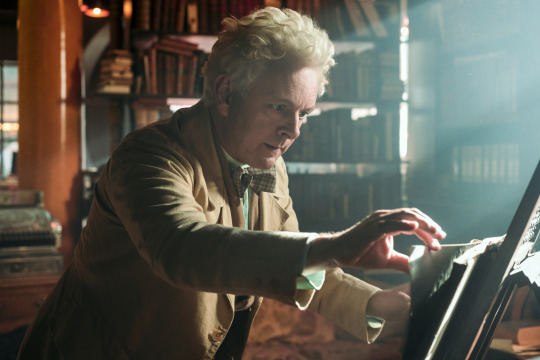
Aziraphale’s bookshop was a set design triumph.
Season two departs from the faithful literary adaptation of its predecessor, instead imagining what comes next for Crowley and Aziraphale. Its storyline is built off a conversation that Pratchett and Gaiman shared during a jetlagged stay in Seattle for the 1989 World Fantasy Convention. Gaiman remembers: “The idea was always that we would tell the story that Terry and I came up with in 1989 in Seattle, but that we would do that in our own time and in our own way. So, once Good Omens (S1) was done, all I knew was that I really, really wanted to tell the rest of the story.”
Telling that story visually may sound daunting, but cinematographer Finney is no stranger to the wonderfully idiosyncratic world of Pratchett and co. As well as lensing Good Omens’ first outing, he’s also shot three other Pratchett stories – TV mini series Hogfather (2006), and TV mini-series The Colour of Magic (2008) and Going Postal (2010).
He relishes how the authors provide a vast creative landscape for him to riff off. “The great thing about Pratchett and Gaiman is that there’s no limit to what you can do creatively – everything is up for grabs,” he muses. “When we did the first Pratchett films and the first Good Omens, you couldn’t start by saying, ‘Okay, what should this look like?’, because nothing looks like Pratchett’s world. So, you’re starting from scratch, with no references, and that starting point can be anything you want it to be.”

Season two saw the introduction of inside-outside sets for key locations including Aziraphale’s bookshop.
From start to finish
The sole DP on the six-episode season, Finney was pleased to team up again with returning director Douglas Mackinnon for the “immensely complicated” shoot, and the pair began eight weeks of prep in summer 2021. A big change was the production shifting the main soho set from Bovington airfield, near London, up to Edinburgh’s Pyramids Studio. Much of the action in Good Omens takes place on the Soho street that’s home to Aziraphale’s bookshop, which was built as an exterior set on the former airfield for season one. Season two, however, saw the introduction of inside-outside sets for key locations including the bookshop, record store and pub, to minimise reliance on green screen.
Finney brought over many elements of his season one lensing, especially Mackinnon’s emphasis on keeping the camera moving, which involved lots of prep and testing. “We had a full-time Scorpio 45’ for the whole shoot (run by key grip Tim Critchell and his team), two Steadicam operators (A camera – Ed Clark and B camera Martin Newstead) all the way through, and in any one day we’d often go from Steadicam, to crane, to dolly and back again,” he says. “The camera is moving all the time, but it’s always driven by the story.”
One key difference for season two, however, was the move to large-format visuals. Finney tested three large-format cameras and the winner was the Alexa LF (assisted by the Mini LF where conditions required), thanks to its look and flexibility.
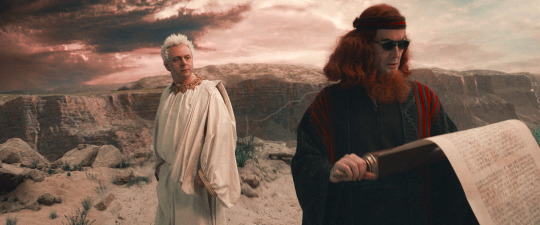
The minisodes were shot on Cooke anamorphics, giving Finney the ideal balance of anamorphic-style glares and characteristics without too much veiling flare.
A more complex decision was finding the right lenses for the job. “You hear about all these whizzy new lenses that are re-barrelled ancient Russian glass, but I needed at least two full sets for the main unit, then another set for the second unit, then maybe another set again for the VFX unit,” Finney explains. “If you only have one set of this exotic glass, it’s no good for the show.”
He tested a vast array of lenses before settling on Zeiss Supremes, supplied by rental house Media Dog. These ticked all the boxes for the project: “They had a really nice look – they’re a modern design but not over sharp, which can look a bit electronic and a bit much, especially with faces. When you’re dealing with a lot of wigs and prosthetics, we didn’t want to go that sharp. The Supremes had a very nice colour palette and nice roll-off. They’re also much smaller than a lot of large-format glass, so that made it easy for Steadicam and remote cranes. They also provided additional metadata, which was very useful for the VFX department (VFX services were provided by Milk VFX).”
The Supremes were paired with a selection of filters to characterise the show’s varied locations and characters. For example, Tiffen Bronze Glimmerglass were paired with bookshop scenes; Black Pro-Mist was used for Hell; and Black Diffusion FX for Crowley’s present-day storyline.

Finney worked closely with the show’s DIT, Donald MacSween, and colourist, Gareth Spensley, to develop the look for the minisode.
Maximising minisodes
Episodes two, three and four of season two each contain a ‘minisode’ – an extended flashback set in Biblical times, 1820s Edinburgh and wartime London respectively. “Douglas wanted the minisodes to have very strong identities and look as different from the present day as possible, so we’d instantly know we were in a minisode and not the present day,” Finney explains.
One way to shape their distinctive look was through using Cooke anamorphic lenses. As Finney notes: “The Cookes had the right balance of controllable, anamorphic-style flares and characteristics without having so much veiling flare that they would be hard to use on green screens. They just struck the right balance of aesthetics, VFX requirements and availability.” The show adopted the anamorphic aspect ratio (2:39.1), an unusual move for a comedy, but one which offered them more interesting framing opportunities.
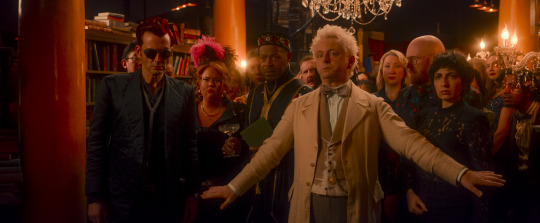
Good Omens 2 was shot on the Alexa LF, paired with Zeiss Supremes for the present-day scenes.
The minisodes were also given various levels of film grain to set them apart from the present-day scenes. Finney first experimented with this with the show’s DIT Donald MacSween using the DaVinci Resolve plugin FilmConvert. Taking that as a starting point, the show’s colourist, Company 3’s Gareth Spensley, then crafted his own film emulation inspired by two-strip Technicolor. “There was a lot of testing in the grade to find the look for these minisodes, with different amounts of grain and different types of either Technicolor three-strip or two-strip,” Finney recalls. “Then we’d add grain and film weave on that, then on top we added film flares. In the Biblical scenes we added more dust and motes in the air.”
Establishing the show’s lighting was a key part of Finney’s testing process, working closely with gaffer Scott Napier and drawing upon PKE Lighting’s inventory. Good Omens’ new Scottish location posed an initial challenge: as the studio was in an old warehouse rather than being purpose-built for filming, its ceilings weren’t as high as one would normally expect. This meant Finney and Napier had to work out a low-profile way of putting in a lot of fixtures.
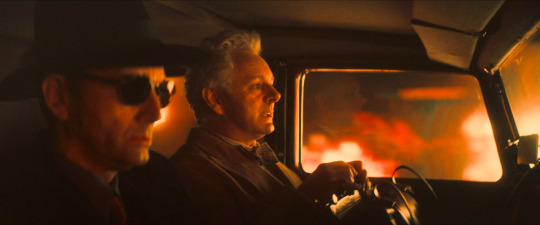
Inside Crowley’s treasured Bentley.
Their first task was to test various textiles, LED wash lights and different weight loadings, to establish what they were working with for the street exteriors. “We worked out that what was needed were 12 SkyPanels per 20’x20’ silk, so each one was a block of 20’x20’, then we scaled that up,” Finney recalls. “I wanted a very seamless sky, so I used full grid cloth which made it very, very smooth. That was important because we’ve got lots of cars constantly driving around the set and the sloped windscreens reflect the ceiling. So we had to have seamless textiles – PKE had to source around 12,000 feet of textiles so that we could put them together, so the reflections in the windscreens of the cars just showed white gridcloth rather than lots of stage lights. We then drove the car around the set to test it from different angles.”
On the floor, they mostly worked with LEDs, providing huge energy and cost savings for the production. Astera’s Titan Tubes came in handy for a fun flashback scene with John Hamm’s character Gabriel. The DP remembers: “[Gabriel] was travelling down a 30-foot feather tunnel. We built a feather tunnel on the stage and wrapped it in a ring of Astera tubes, which were then programmed by dimmer op Jon Towler to animate, pulse and change different colours. Each part of Gabriel’s journey through his consciousness has a different colour to it.”
Among the rigs built was a 20-strong Creamsource Vortex setup for the graveyard scene in the “Body Snatchers” minisode, shot in Stirling. “We took all the yokes off each light then put them on a custom-made aluminium rig so we could have them very close. We put them up on a big telehandler on a hill that gave me a soft mood light, which was very adjustable, windproof and rainproof.”

Shooting on the VP stage for the birth of the universe scenes in episode one.
Sky’s the limit
A lot of weather effects were done in camera – including lightning effects pulsed in that allowed both direct fork lightning and sheet lightning to spread down the streets. In the grade, colourist Spensley was also able to work his creative magic on the show’s skies. “Gareth is a very artistic colourist – he’s a genius at changing skies,” Finney says. “Often in the UK you get these very boring, flat skies, but he’s got a library of dramatic skies that you can drop in. That would usually be done by VFX, but he’s got the ability to do it in Baselight, so a flat sky suddenly becomes a glorious sunset.”
Finney emphasises that the grade is a very involved process for a series like Good Omens, especially with its VFX-heavy nature. “This means VFX sequences often need extra work when it comes back into the timeline,” says the DP. “So, we often add camera movement or camera shake to crank the image up a bit. Having a colourist like Gareth is central to a big show like Good Omens, to bring all the different visual elements together and to make it seamless. It’s quite a long grade process but it’s worth its weight in gold.”


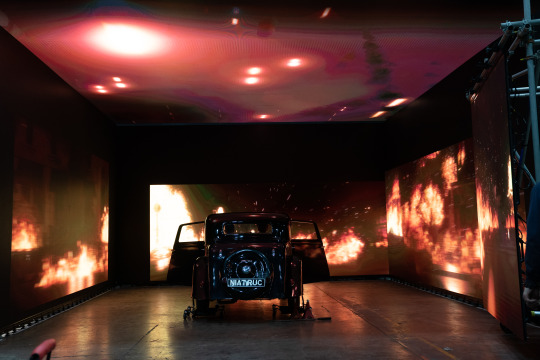
Shooting in the VR cube for the blitz scenes .
Finney took advantage of virtual production (VP) technology for the driving scenes in Crowley’s classic Bentley. The volume was built on their Scottish set: a 4x7m cube with a roof that could go up and down on motorised winches as needed. “We pulled the cars in and out on skates – they went up on little jacks, which you could then rotate and move the car around within the volume,” he explains. “We had two floating screens that we could move around to fill in and use as additional source lighting. Then we had generated plates – either CGI or real location plates –projected 360º around the car. Sometimes we used the volume in-camera but if we needed to do more work downstream; we’d use a green screen frustum.” Universal Pixels collaborated with Finney to supply in-camera VFX expertise, crew and technical equipment for the in-vehicle driving sequences and rear projection for the crucial car shots.

John Hamm was suspended in the middle of this lighting rig and superimposed into the feather tunnel.
Interestingly, while shooting at a VP stage in Leith, the team also used the volume as a huge, animated light source in its own right – a new technique for Finney. “We had the camera pointing away from [the volume] so the screen provided this massive, IMAX-sized light effect for the actors. We had a simple animation of the expanding universe projected onto the screen so the actors could actually see it, and it gave me the animated light back on the actors.”
Bringing such esteemed authors’ imaginations to the screen is no small task, but Finney was proud to helped bring Crowley and Aziraphale’s adventures to life once again. He adds: “What’s nice about Good Omens, especially when there’s so much bad news in the world, is that it’s a good news show. It’s a very funny show. It’s also about good and evil, love and doing the right thing, people getting together irrespective of backgrounds. It’s a hopeful message, and I think that that’s what we all need.”
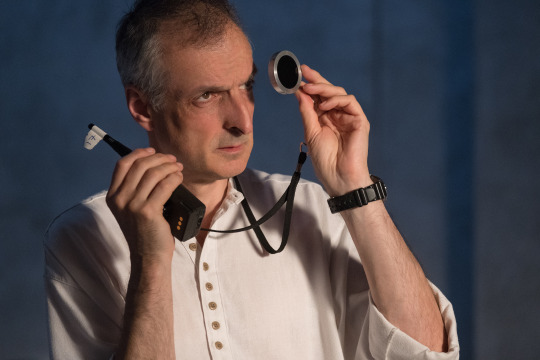
Finney is no stranger to the idiosyncratic world of Sir Terry Pratchett and Neil Gaiman.
#good omens#gos2#season 2#interview#gavin finney#neil gaiman#terry pratchett#gavin finney interview interview#s2 interview#bts#fun fact#british cinematographer#british cinematographer 2023#jon hamm#2ep1#2ep2#2ep3#2ep4#2ep6#2i1i1#job's minisode#1941 minisode#1827 minisode#2i6i7#bentley
2K notes
·
View notes